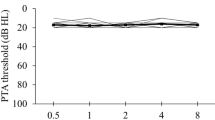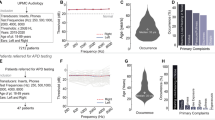Abstract
The current study aimed to determine the criteria used for screening and diagnosing cases with central auditory processing disorders (CAPD) in India. A cross-sectional questionnaire-based survey design was used in the present study. A questionnaire was developed to determine the criteria used for screening and diagnosing CAPD across clinics in India. Responses were obtained from 83 participants from all over India. Results indicated that 78% of respondents were currently doing CAPD evaluation. In that, the majority of respondents (63%) had a predetermined minimum battery that was relatively adaptable depending on the case history and age of the patient. In screening, most respondents used a screening questionnaire (SCAP, 75%) and a screening test (STAP, 60%). In the diagnostic protocol, the most used tests by the respondents were masking level difference (MLD), repetition of words (RW), gap detection test (GDT), pitch pattern test (PPT), speech perception in noise (SPIN), digit span test (DST), dichotic digit test (DDT), binaural fusion test (BFT), auditory brainstem response (ABR), dichotic CV test (DCVT), and duration pattern test (DPT). The current study’s result will help professionals choose the minimum test battery for diagnosing CAPD.








Similar content being viewed by others
References
American Academy of Audiology (2010) Guidelines for the diagnosis, treatment and management of children and adults with central auditory processing disorder (Task Force). Retrieved from http://www.audiology.org/resourcesdocumentlibrary
American Speech-Language-Hearing Association (1996) Central auditory processing: Current status of research and implications for clinical practice. Task force on central auditory processing consensus development. Am J Audiol 5(2):41–52
American Speech-Language-Hearing Association (2005) (Central) auditory processing disorder [Technical report]. www.asha.org/policy.
Baddeley AD, Hitch G (1974) Working memory. Psychol Learn Motiv Adv Res Theory 8(C):47–89. https://doi.org/10.1016/S0079-7421(08)60452-1
Catts HW, Chermak GD, Craig CH, Johnston JR, Keith RW, Musiek FE, Robin DA, Sloan C, Paul-Brown D, Thompson ME, Campbell TF, Ferre JM, Kraus N, McNeil MR, Phillips DP, Stark RE, Tallal P, Watson CS (1996) Central auditory processing: current status of research and implications for clinical practice task force on central auditory processing consensus development. Am J Audiol 5(2):41–52. https://doi.org/10.1044/1059-0889.0502.41
Chermak GD, Musiek FE (1997) central auditory processing disorders: new perspectives. Singular Publishing Group, San Diego, CA
Chermak GD, Silva ME, Nye J, Hasbrouck J, Musiek FE (2007) An update on professional education and clinical practices in central auditory processing. J Am Acad Audiol 18(5):428–452. https://doi.org/10.3766/JAAA.18.5.7/BIB
Domitz DM, Schow RL (2000) A new CAPD battery—multiple auditory processing assessment. Am J Audiol 9(2):101–111. https://doi.org/10.1044/1059-0889(2000/012)
Emanuel DC (2002) The auditory processing battery: survey of common practices. J Am Acad Audiol 13(2):93–117. https://doi.org/10.1055/S-0040-1715952/BIB
Emanuel DC, Ficca KN, Korczak P (2011) Survey of the diagnosis and management of auditory processing disorder. Am J Audiol 20(1):48–60. https://doi.org/10.1044/1059-0889(2011/10-0019)
Hind SE, Haines-Bazrafshan R, Benton CL, Brassington W, Towle B, Moore DR (2011) Prevalence of clinical referrals having hearing thresholds within normal limits. Int J Audiol 50(10):708–716. https://doi.org/10.3109/14992027.2011.582049
Jerger J, Musiek F (2000) Report of the consensus conference on the diagnosis of auditory processing disorders in school-aged children. J Am Acad Audiol 11(9):467–474. https://doi.org/10.1055/S-0042-1748136/BIB
Katz J (1992) Classification of auditory processing disorders. In: Katz J, Stecker N, Henderson D (eds) Central auditory processing: a transdisciplinary view. Mosby, St. Louis, MO, pp 81–91
Lampe B (2011) Critical review: are currently available pre-packaged behavioral test batteries (SCAN and MAPA) effective for use in the assessment and/or diagnosis of auditory processing disorder (APD) in children assuming the American SpeechLanguage Hearing Association (ASHA) definition of APD? http://www.uwo.ca/fhs/csd/ebp/reviews/2010-11/Lampe.pdf
Lessler K (1972) Health and educational screening of school-age children - Definition and objectives. Am J Public Health 62(2):191–198
Magimairaj BM, Nagaraj NK (2018) Working memory and auditory processing in school-age children. Lang Speech Hear Serv Sch 49:409–423. https://doi.org/10.1044/2018_LSHSS-17-0099
Moore DR (2011) The diagnosis and management of auditory processing disorder. Lang Speech Hear Serv Sch 42(3):303–308. https://doi.org/10.1044/0161-1461(2011/10-0032)
Musiek FE, Geurkink NA, Kietel SA (1982) Test battery assessment of auditory perceptual dysfunction in children. Laryngoscope 92(3):251–257. https://doi.org/10.1288/00005537-198203000-00006
Muthuselvi T, Yathiraj A (2009) Utility of the screening checklist for auditory processing (SCAP) in detecting (C)APD in children. India Inst Speech Hear Manasagangothri 7(2009):159–175
Welsh LW, Welsh JJ, Healy MP (1980) Central auditory testing and dyslexia. Laryngoscope 90(6):972–984. https://doi.org/10.1002/LARY.1980.90.6.972
Yathiraj A, Maggu AR (2012) Development of a screening test for APD. All India Institute of Speech and Hearing, Mysuru
Yathiraj A, Maggu AR (2013a) Comparison of a screening test and screening checklist for auditory processing disorders. Int J Pediatr Otorhinolaryngol 77(6):990–995. https://doi.org/10.1016/j.ijporl.2013.03.028
Yathiraj A, Maggu AR (2013b) Screening test for auditory processing (STAP): a preliminary report. J Am Acad Audiol 24(9):867–878. https://doi.org/10.3766/JAAA.24.9.10/BIB
Yathiraj A, Maggu AR (2014) Validation of the screening test for auditory processing (STAP) on school-aged children. Int J Pediatr Otorhinolaryngol 78(3):479–488. https://doi.org/10.1016/j.ijporl.2013.12.025
Yathiraj A, Mascarenhas K (2003) Effect of auditory stimulation of central auditory proseccing in children with CAPD. A project funded by AIISH research fund
Yathiraj A, Rao AP, Apeksha K (2020) Specialisation in the field of speech and hearing: Is it required in India? J Indian Speech Lang Hear Assoc 34(1):31. https://doi.org/10.4103/JISHA.JISHA_16_19
Yathiraj A, Vanaja CS (2018) Criteria to classify children as having auditory processing disorders. Am J Audiol 27(2):173–183. https://doi.org/10.1044/2018_AJA-17-0091
Acknowledgements
The authors acknowledge the Director of All India Institute of Speech and Hearing for allowing to carry out this study. The authors acknowledge the participant for their cooperation. The study is a part of the dissertation submitted to the Univerity of Mysore.
Funding
The study does not involve any funds.
Author information
Authors and Affiliations
Contributions
SK was involved in concept development, study design, questionnaire preparation, analysis of the results, interpretation, and manuscript writing; CJ was involved in concept development and study design, questionnaire preparation, and manuscript writing.
Corresponding author
Ethics declarations
Conflict of interest
There is no conflict of interest to disclose.
Additional information
Publisher's Note
Springer Nature remains neutral with regard to jurisdictional claims in published maps and institutional affiliations.
Rights and permissions
Springer Nature or its licensor (e.g. a society or other partner) holds exclusive rights to this article under a publishing agreement with the author(s) or other rightsholder(s); author self-archiving of the accepted manuscript version of this article is solely governed by the terms of such publishing agreement and applicable law.
About this article
Cite this article
Kumar, S., Jain, C. A Survey on Screening and Diagnostic Criteria of Auditory Processing Disorders in India. Indian J Otolaryngol Head Neck Surg 76, 288–297 (2024). https://doi.org/10.1007/s12070-023-04146-w
Received:
Accepted:
Published:
Issue Date:
DOI: https://doi.org/10.1007/s12070-023-04146-w




